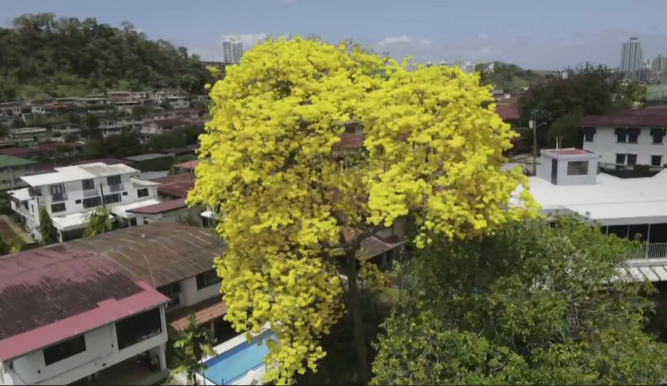The greening of the capital city

By Margot Thomas
The capital city acquired 975 tree seedlings last year species such as: flamboyan, golden rain, guayacán , among others and the number could grow fivefold when the rainy season arrives, contributing to the greening of the city we live in.
Spaces in urban areas have a huge impact on the quality of life of its inhabitants, ,but its preservation requires awareness and commitment on the part of citizens.
According to theUN Food and Agriculture Organization FAO) urban area occupy less than 1% of the earth’s surface , but they are+ home to more than half of the world’s population.
Despite being areas characterized by traffic, crowds, steel, and cement, cities are ecosystems whose state affects people’s quality of life.
In addition, they can be spaces that host biodiversity, so it is important to pay attention to the transformation of natural areas.
For the FAO, it is necessary for citizens and decision-makers to be involved in planning that allows restoring urban ecosystems since green spaces play an important role in the in relaxation and recreation.
According to Cities4forests , a coalition made up of more than 60 countries, forests and green areas in the city provide enormous benefits such as cleaner air and water, climate resilience, biodiversity, and improved health and well-being.
In the Panamanian capital, there are parks and green areas that provide resilience and recreation to citizens. The Metropolitan Park, Parque Omar The Summit, and the Cinta Costera, are areas that favor the quality of life, without forgetting the avenues, which are also points to concentrate tree species.
Via la Verde,is a program that seeks balance in the capital In urban areas, the management of reforesting and caring for green spaces usually falls to the municipalities and some organizations. Luis Norato, Director of Environmental Management of Panama, explained to TVN. , the actions carried out through the Greenway Reforestation Program.
“Based on the issue of trees and the replacements that we are applying, we serve them on a daily basis,” he said. This year, for the rainy season, which is the best time to sow, the number of trees to be planted in the 26 townships of the district of Panama will “double or fivefold” , according to Norato , taking into account that currently, they have CT studies of some long-lived species, which due to their condition have had to be cut down, but with the commitment of the Mayor to replace them but not necessarily in the same place due to the architectural or urban development conditions of the city “The priority is to sow and give that greenery and balance to the environment that is so much needed .” One of the crops that can be seen is located on the Ricardo J. Alfaro road (Tumba Muerto) on the border with San Miguelito to the National Brewery, with different seedlings, to which the daily irrigation system is applied in the morning and at night. The program includes avenues, parks and depending on the township and its urban planning, in a broader sense forests can be reforested . Before sowing, they verify the conditions of the place and if the species does not represent a danger for the constructions, due to the issue of rooting. “All this has to be planned and executed in a comprehensive way. Norato said that they need the community boards to get involved as well as the communities. “Each one must take care of his tree.”





